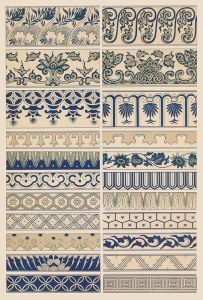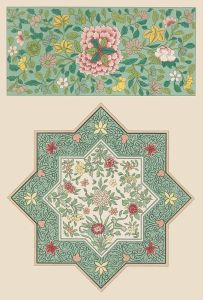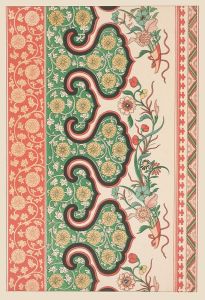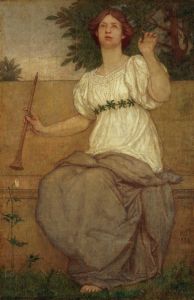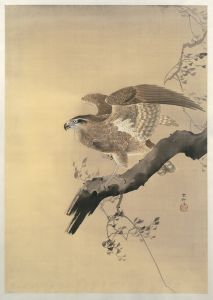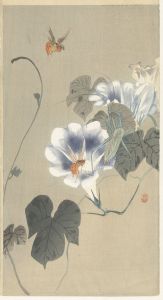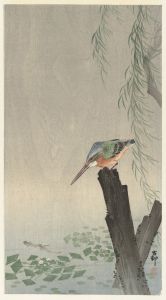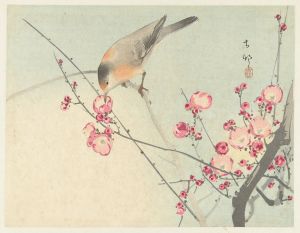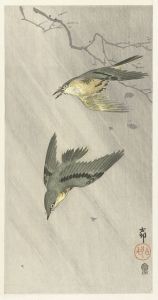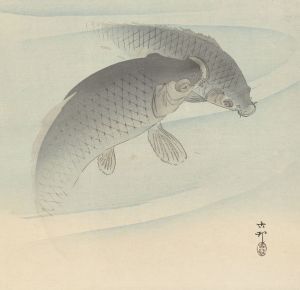
Sandpipers at sickle moon
A hand-painted replica of Ohara Koson’s masterpiece Sandpipers at sickle moon, meticulously crafted by professional artists to capture the true essence of the original. Each piece is created with museum-quality canvas and rare mineral pigments, carefully painted by experienced artists with delicate brushstrokes and rich, layered colors to perfectly recreate the texture of the original artwork. Unlike machine-printed reproductions, this hand-painted version brings the painting to life, infused with the artist’s emotions and skill in every stroke. Whether for personal collection or home decoration, it instantly elevates the artistic atmosphere of any space.
Ohara Koson was a prominent Japanese artist known for his exquisite woodblock prints, particularly those depicting birds and flowers. His work is part of the shin-hanga movement, which revitalized traditional ukiyo-e art in the early 20th century by incorporating Western elements such as perspective and shading while maintaining traditional Japanese themes and techniques.
"Sandpipers at Sickle Moon" is one of Koson's celebrated prints, showcasing his exceptional skill in capturing the delicate beauty of nature. This artwork features a serene scene with sandpipers, a type of wading bird, set against the backdrop of a crescent moon, often referred to as a "sickle moon" due to its shape. The composition is a testament to Koson's ability to blend simplicity with elegance, creating a tranquil and harmonious image that resonates with viewers.
Koson's work is characterized by its attention to detail and subtle use of color, and "Sandpipers at Sickle Moon" is no exception. The birds are depicted with meticulous precision, highlighting their graceful forms and delicate plumage. The moon, rendered in soft, muted tones, adds a sense of calm and serenity to the scene, enhancing the overall aesthetic appeal of the print.
The shin-hanga movement, which Koson was a part of, emerged in Japan during the Taisho and early Showa periods (1912-1945). It aimed to rejuvenate the traditional ukiyo-e art form by incorporating modern sensibilities and techniques. Artists like Koson played a crucial role in this movement, producing works that appealed to both Japanese and Western audiences. The movement was supported by publishers such as Watanabe Shozaburo, who recognized the potential of these prints in international markets.
Koson's prints, including "Sandpipers at Sickle Moon," were highly sought after by collectors, particularly in the United States and Europe. His ability to capture the essence of his subjects with elegance and precision made his work popular among art enthusiasts and collectors alike. Today, his prints are considered valuable pieces of art, often featured in exhibitions and collections worldwide.
"Sandpipers at Sickle Moon" exemplifies the themes and techniques that define Koson's work. The print reflects a deep appreciation for nature, a common theme in Japanese art, and showcases Koson's mastery of the woodblock printing technique. His use of color and composition creates a sense of balance and tranquility, inviting viewers to appreciate the beauty of the natural world.
In summary, Ohara Koson's "Sandpipers at Sickle Moon" is a quintessential example of the shin-hanga movement's success in blending traditional Japanese art with modern influences. The print's delicate depiction of sandpipers under a crescent moon captures the serene beauty of nature, highlighting Koson's exceptional skill as an artist. His work continues to be celebrated for its artistic merit and contribution to the revival of Japanese woodblock printing in the early 20th century.





